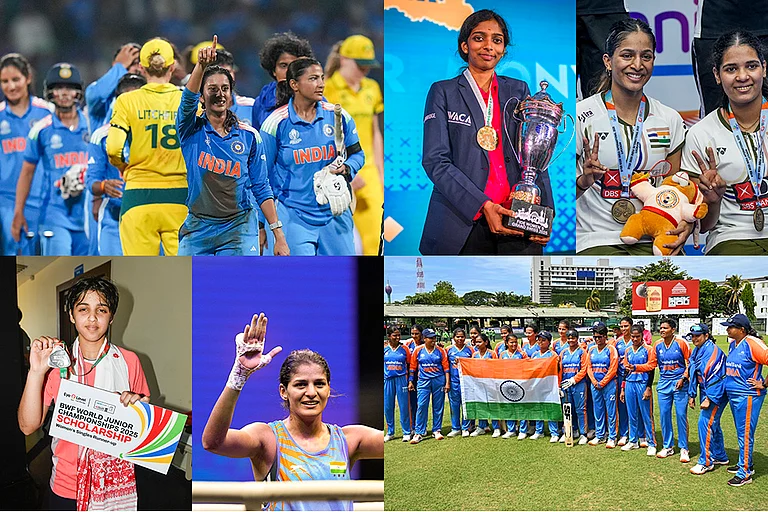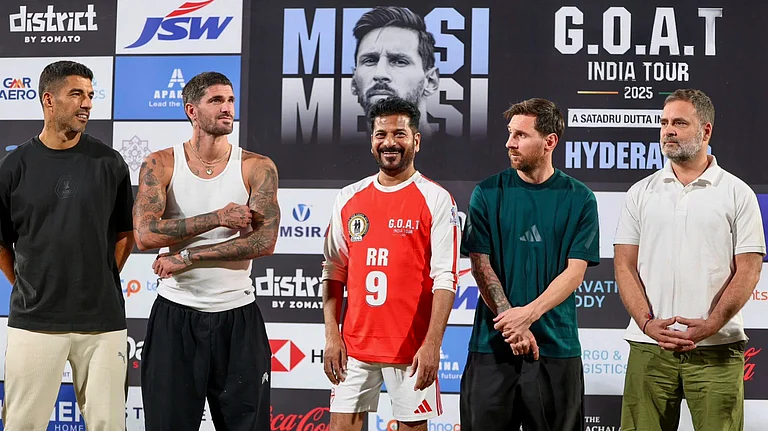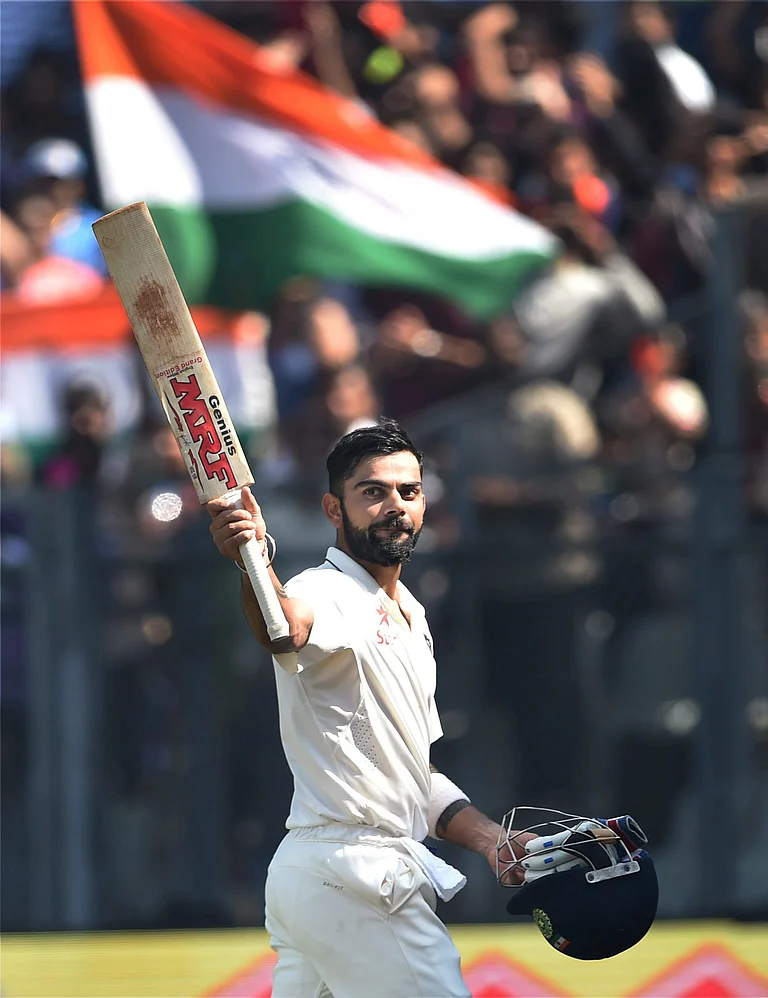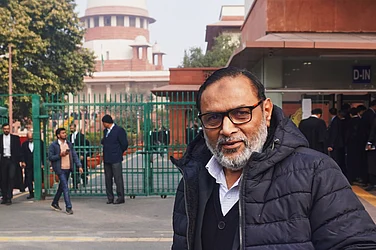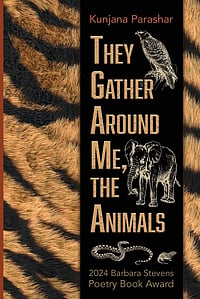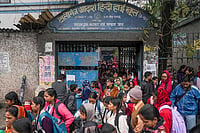Alone Together
As news updates, and explanatory reportage of the stampede at the M. Chinnaswamy Stadium, Bangalore, during the Royal Challengers’ Bangalore victory lap, unravelled before us in real time, echoes of infrastructural failure, crowd mismanagement and “last minute changes” try, unsuccessfully, to make sense of the tragedy. 11 people have been reported dead. There is no way to rationalise the dark irony that retrospectively undergirds the crushing melancholy of this realisation.
Perhaps, years later, a writer might turn the event into a satire about the nature of city life - urban dystopias, the ebb and flow of fandom and fame in a country that lives and breathes cricket, and the characteristic failure of state machinery. For now, however, one is left, somewhat sheepishly, holding the frame of a picture that seems all too familiar – of crowds spreadeagled like cling-wrap on metallic-bars that flank a public space. The image is bursting at the seams. Literally.
According to the report in The Hindu that featured this compelling photograph, “over 50 people have been killed in stampedes in 2025 so far at temples, railway stations, and at the Maha Kumbh, among others”. While management of these events is notably complex, the dynamics of “the mind of the crowd” are at play here. The communitarian logic of living “alone together” has reached a fever pitch in the age of mass weaponization of predatory identities by the ruling party.
Public emotions have become the orchestrators of mass movements. “Stars” across the socio-cultural spectrum – from politics to cinema to sport – have embraced the optics of conjuring spectacles. Entire infrastructures of media, advertising and event management propel the power of the image, turning a psychological activity into a bodily phenomenon.
Speaking of the nature of the crowd in his 2002 work, The Crowd: A Study of the Popular Mind, polymath and anthropologist Gustave Le Bon uses the metaphor of contagion: “In a crowd every sentiment and act is contagious”. He goes on to point out the nature of this cascading imagery – “a crowd thinks in images, and the image itself immediately calls up other images having no logical connection with the first.” Sociologist William Mazzarella cites the end result of this activity of “collective hallucination” as a “mass cognitive meltdown”. In essence, the mind of the crowd turns savage, or effectively goes absent. Other forces come into play.
It is important to note that events, both on the pitch, and off (in the stadium/communal viewing space/home television etc.) are mediated by the key analytic of speed or pace. In a stampede the critical point is sudden and almost unnoticeable, leading to instantaneous and deadly confusion. In the case of the Bengaluru stampede, the tell-tale signs of an imminent disaster were there. There are reports of hordes of fans trying to get in on the action by climbing trees, scaling the stadium wall, and even the tall metallic fences.
The crowd goes “out of hand” and even characters within the tragedy do not realise when laudatory applause turns into shouts for help. There is a pulse-like self-sustaining energy that surges through masses of people trapped in a public space. Like milk boiling over, this electric energy of the stampede exceeds the boundaries of that space caused by, and causing, fatal material and human mayhem. Perhaps the ideal scenario of state management of large groups of people who come together in solidarity and passion, as “groupies” of a kind (from the shakha to the labour union) is to ritually slow down crowds, and redirect this visceral, affective energy. Elias Canetti notes this key element of state management and creation of social institutions through the maintenance of this “affective energy” by “a conscious slowing down of crowd events” (1984)
Several commentators have pointed out the corporeal similarity between the carnival and the riot. The iconic image of the saffron-bandanaed man with his hands up in the air in celebration, one hand clutching an iron rod, during the 2002 Godhra pogrom became synonymous with the horrific pleasure derived by the violence of surging Hindutva mobs. The sudden confusion of the stampede in M. Chinnaswamy stadium is not to be read simply as a “collective hallucination” or even collective paranoia, however it is important to place this event within the history of identity politics that has been a part of the sport.
Identity Games
If, like me, you have grown up in this country in the 90s there is little chance that you have remained unaffected by the mad frenzy brought on by the sport. There is no slow “middle-overs” energy in this innings – either you are a part of the power plays or you are not. Like every privileged child who could afford to nourish the dream of sports stardom with relative ease in this country (through the cycle of viewership-consumption-cricket coaching-local leagues-Ranji), I wanted to be a cricketer when I was in middle school. But I wanted to be the “good-soldier”, the wall – Rahul Dravid, not Master Blaster, Sachin Tendulkar, in a time when the figure of the all-rounder was beginning to gain traction. A paragon of ethical play, calm composure and resilience, Dravid always “took one for the team”, and while he rarely bowled, he embraced role of the wicketkeeper so that more talent could be accommodated in the playing eleven.
Since adolescence is about finding peer-circles and shared interests that will shape future beliefs about one’s identity, I tried to fashion my cricketing personality in that way. I was an average player – not half as good as others representing the millions who were never able to achieve this life-changing childhood dream of playing for the country but are still connected intimately with the game through varying degrees of professional or personal engagement. (A friend who writes about cricket nowadays, recently told me, how, when he went back to his hometown in Patna, somebody who used to play cricket with him more than 20 years ago, immediately recognised him, and his signature explosive batting, at a random tea stall). Dravid was also a “safe” Savarna icon, an identity that periodically came to the fore through his controversial affiliations with the RSS.
There is no doubt that sport (cricket, especially, in India) is about identity. Caste, nationality, religion, and gender are activated as historical fault lines in these spaces, both deliberately and insidiously – often through the mediation of violent metaphors.
Think about the initial IPL franchisee campaigns that plastered our television screens almost 2 decades ago with martial imagery – remember Kolkata the first Knight Riders’ “Korbo Logbo Jeetbo” campaign videos that had players sporting helmets and halberds, swords, and shields; or the mad violence that grips people during India-Pakistan matches. In 1999, Bal Thackeray publicly threatened the administration about allowing Pakistani cricketers to play on Indian soil citing Islamabad’s support for “anti-India” activities.
Shiv Sena activists dug up the Feroz Shah Kotla pitch in an attempt to prevent the start of the test series. Caste-based exclusion, prejudice, and assertion has been ever-present in the coloured history of cricket in this country through opportunities, key managerial decision-making, and game-play, whether it is the Ranji or the big leagues. In 2017, Ramdas Athavle’s demand for reservations for SCs/STs in India kicked up a storm
“Beyond his Caste Mark”
The Royal Challengers Bengaluru win that ended the 18 year-long IPL drought came quickly on the heels of Kohli announcing his retirement from Test critic. It was the victory march held in M Chinnaswamy Stadium, Bengaluru, that led to the stampede. Cricket has been at the centre of news conversations for the last few weeks. Perhaps it was serendipity – call it synchronicity if you’d like – that placed before my eyes a poem that uncannily uses the metaphor of cricket to unravel caste identity in the context of the crowded space of the local train.
I read Chandramohan Sathyanathan’s “A Local Train Conversation” in a fabulous anthology curated and edited by Bilal Moin – The Penguin Book of Poems on the Indian City. I share the poem below.
The epigraph by Ashis Nandy beautifully sums up everything that this piece of writing points towards. Do note the frenetic energy of cricket metaphors that coalesce within the tight communal space of the local train, extracting the identities of the two individuals within the crowd.
The conversation turns into a kind of confrontation, and a gradual build up to the climactic “york-er”. Chandramohan’s poem is a startlingly precise and evocative reminder that dispels the notion of the absence of caste in the Indian city promising anonymity as the great equaliser. Caste remains untouched, only its form changes.
A LOCAL TRAIN CONVERSATION
- Chandramohan Sathyanathan (B. 1986)
‘Cricket is an Indian sport accidentally discovered by the English’
—Ashis Nandy
Caste in a local train can be deceptive
like the soul
of a Pakistani fast bowler camouflaged
in a three piece suit
and Anglicized accent.
Though seated opposite me,
I can feel him charging on to me.
If my surname is too long
I could be –caught behind.
Will I be trapped leg before wicket
If I attempt a bloodline crossover?
I try to camouflage
into stripes of concocted ancestry
along fresh water currents.
Can I switch over to
My mother’s surname
like switching from
active voice to passive voice
in the midst of a harangue?
Hope I do not lose my nerve
at abrasive queries like bouncers.
I try to find myself a place
in his skull
beyond his caste mark, amidst his eyebrows:
like trying to find my way around
an ever changing map!
He tries assessing me with an in swinger first
“What is your full name?”
Then he tries an out swinger that seams a lot
“and what is your father’s name?”
By this time, he loses his nerve
And tries on a direct York-er
“What is your caste?”
(Penguin Random House India, 2025)
Aranya is a poet, currently based in Delhi, a place to which he doesn’t belong. He is pursuing a PhD in Social Anthropology








